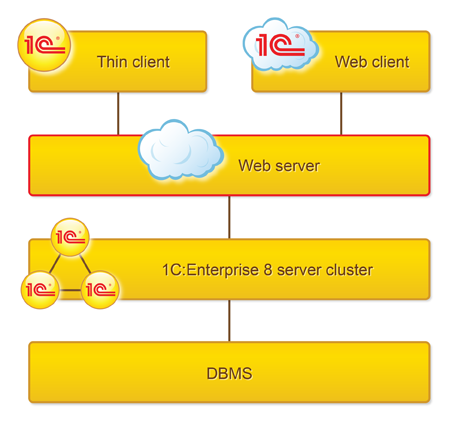At first glance it may seem that the existence of a web client would make a thin client unnecessary. The reason for this is that the web client’s features are identical to the thin client's, and there is no need to install it on a user's PC.
This is not the case, however. Although the web client does not need to be installed and therefore might seem easier to use, the thin client does still offer some essential advantages.
First, from a functional point of view, a web client cannot do everything that a thin client can. The amount of such extra functionality is not large, and most off-the-shelf applications are implemented for use with both thin and web clients. However, some specialized applications may utilize functionality which is only partially implemented in a web client or not implemented at all. For example, interacting with file systems, working with XML, working with email, and so on.
Second, a web client can only connect to Infobases through a web server, and this might not meet the data security requirements. For example, an organization might not want to expose the web-server, but still would like to work over VPN with remote clients.

Third, there are differences in licensing. The web client can use the server-client license only. This means that the client license key must be installed on the 1C:Enterprise server. Unlike the web client, however, the thin client can use client licenses installed on the server as well as client licenses installed on the client computer.
Next page: Bulk document reposting
